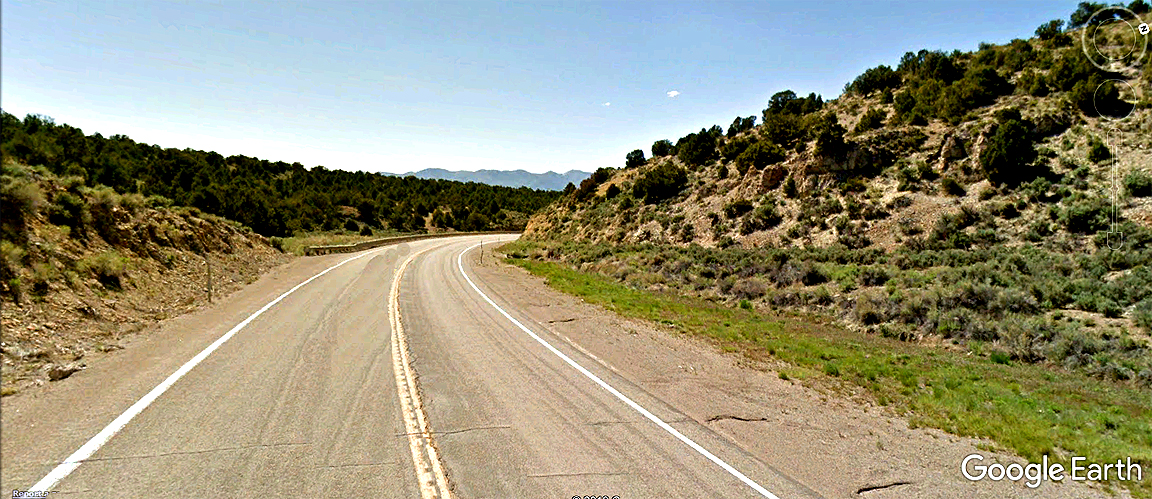
| A Google Earth street car perspective that I edited and processed through photoshop. A road passes through the lower to middle Pennsylvanian Ely Limestone in White Pine County, Nevada. The Ely Limestone consists of approximately 2,450 to 2,600 feet of light olive-gray to brownish-gray thin to thick-bedded chert-rich limestone, with occasional sandstone and siltstone horizons in its upper portions. It bears a prolific invertebrate fossil fauna--producing: algae (encrusting and phylloid varieties, Tubiphytes, Komia, Osagia, stromatolites); foraminiferera (fusulinids, endothyrids); sponges (AKA, the Porifiera: Chaetetes and spicules); brachiopods (all three primary shell types--punctate, impunctate, pseudo-punctate--plus, spines); corals (extinct tabulate and rugose forms--some coral heads up to five feet across); bryozoans (twig-like, encrusting, and fenstrate); mollusks (gastropods, pelecypods, ammonoids, and several miscellaneous kinds); arthropods (trilobites and ostroacods); echinoderms (crinoids and echinoid spines); and conodonts (diminutive tooth-like denticles, unrelated to modern jaws, that served to enable food gathering in an extinct lamprey eel-like organism). |